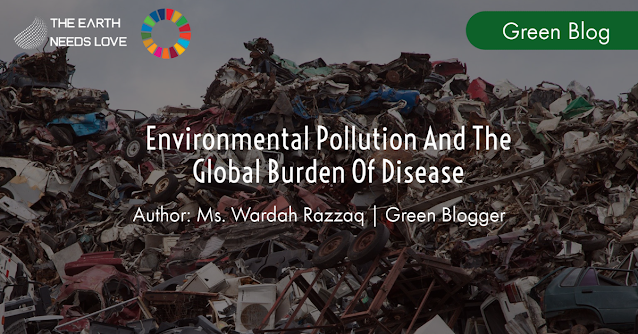Pollution is the introduction of
contaminants into the environment that cause harm or discomfort to humans or
other living organisms, or that damage the environment, which can come in the
form of chemical substances, or energy such as noise, heat, or light.
Pollutants can be naturally occurring substances or energies but are considered
contaminants when more than natural levels.
Environmental pollution takes
place when the environment cannot process and neutralize harmful by-products of
human activities (poisonous gas emissions) in due course without any structural
or functional damage to its system.
Pollution
occurs, on the one hand, because the natural environment does not know how to
decompose the unnaturally generated elements (i.e., anthropogenic pollutants),
and, on the other, there is a lack of knowledge on the part of humans on how to
decompose these pollutants artificially. It may last many years during which
the nature will attempt to decompose the pollutants; in one of the worst cases –
that of radioactive pollutants – it may take as long as thousands of years for
the decomposition of such pollutants to be completed.
Why does pollution
matter?
It
matters first and for most because it has negative impacts on crucial
environmental services such as provision of clean air and clean water without
which life on Earth as we know it would not exist. People are the reason we
have pollution. Pollution affects our environment because the water pollution
can affect the living conditions of people and plants. Pollution can cause our
environment to start and fall. If we don’t have clean water for plants and trees,
how are we going to make paper and grow veggies for people to eat? Therefore,
the big idea affects the environment and people are the main cause of
pollution.
Types of environmental
pollution
There
are many types of environmental pollution, but the most important ones are:
Air pollution – some
of the most notable are sulphur dioxide, nitrogen dioxide, carbon monoxide,
ozone, volatile organic compounds, and airborne particles, with radioactive
pollutants probably among the most destructive ones (specifically when produced
by nuclear explosions).
Water pollution –
includes insecticides and herbicides, food processing waste, pollutants from
livestock operations, volatile organic compounds, heavy metals, chemical waste,
and others.
Soil pollution (contamination)
– hydrocarbons, solvents, and heavy metals.
In
modern industrialized societies, fossil fuels (oil, gas, coal) transcended
virtually all imaginable barriers and firmly established themselves in our
everyday lives. Not only do we use fossil fuels for our obvious everyday needs
(such as filling a car), as well as in the power-generating industry, they
(specifically oil) are also present in such products as all sorts of plastics,
solvents, detergents, asphalt, lubricating oils and in a wide range of
chemicals for industrial use.
Among
other pollution sources, agriculture (livestock farming)
is worth mentioning as the largest generator of ammonia emissions resulting in
air pollution. Of the total amount of greenhouse gasses, in agricultural
production occurs about 30%. Thereof agricultural soil produces 32%, livestock
31%, crops cultivation 12%, from manure management occur 6% and 19% of other
emissions.
Environmental
pollution is causing a lot of distress not only to humans but also animals,
driving many animal species to endangerment and even extinction. The trans
boundary nature of environmental pollution makes it even more difficult to
manage it.
It’s
widely recognized that we are hugely overspending our current budget of natural
resources – at the existing rates of its exploitation, there is no way for the
environment to recover in good time and continue “performing” well in the
future. Everything on our planet is interconnected and while the nature
supplies us with valuable environmental services without which we cannot exist,
we all depend on each other’s actions and the way we treat natural resources.
About
the Author: Wardah Razzaq is a graduate of environment from University of the
Punjab, Lahore. She is an environmentalist by profession and by passion. She is
also a climate reality leader, environmental and climate change activist,
ambassador of sustainability, green blogger, and a member of Eco-Club Pakistan.
She is envisioned, determined, and committed at raising the awareness regarding
the various environmental issues and about their impacts and solutions among
the masses and that how they can become the responsible citizens of Pakistan eco-friendly.
She loves to write on nature, environment, climate and sustainable development.

0 Comments